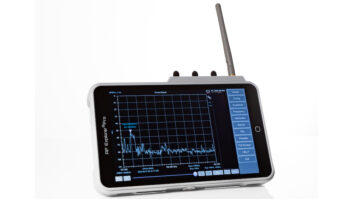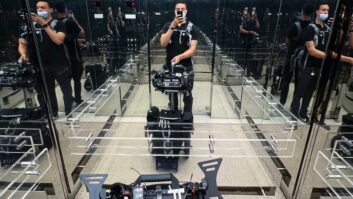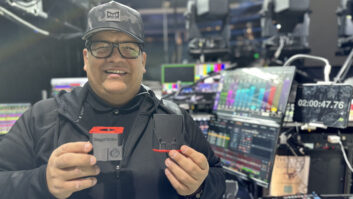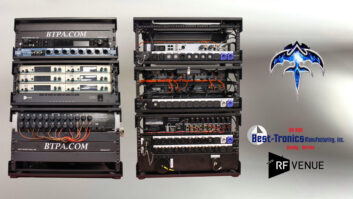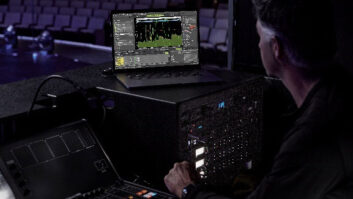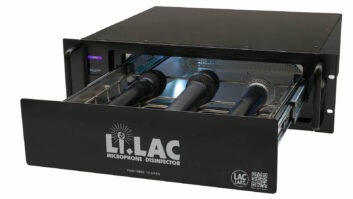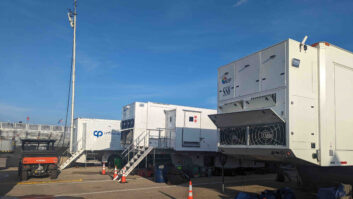WASHINGTON, D.C.—The Federal Communications Commission’s Incentive Auction came to an end on January 18, 2017 when telecommunications companies met the closing criteria for a clearing target of 84 MHz, of which 70 MHz is public airwaves. After four reverse and forward auction stages and a process that extended over 43 weeks, wireless providers bid $18.2 billion, successfully meeting the aggregate asking price of the participating television broadcasters plus stipulated costs.
When the FCC drew up its 2010 National Broadband Plan in response to the American Recovery and Reinvestment Act, a stimulus package passed by Congress in 2009, it planned to sell off as much as 144 MHz of UHF spectrum in the 600 MHz band to the telecommunications companies. The FCC plan called for the target frequency spectrum to be cleared by incumbent TV stations to be reduced at successive stages of the auction if telco bids failed to meet the broadcasters’ asking prices.
After the first three auction stages failed, stage four’s reverse auction, which began on December 13, was for a clearing target of 84 MHz, beginning above Channel 37 at 614 MHz. Broadcasters set the price at $10 billion in the reverse auction that ended January 13.
Pro audio wireless equipment manufacturers have known for years that this day would come. Having weathered the loss of the 700 MHz band to digital television, they have been introducing new products that operate outside prime UHF spectrum, including parts of the 900 MHz band, around 1.4 GHz, the unlicensed 1.9 GHz DECT and 2.4 GHz Wi-Fi bands, and above 6 GHz.
“The DTV transition resulted in a 40 percent reduction in the available TV channel—VHF and UHF—operating spectrum, while wireless microphone usage has been increasing approximately 8 percent per year,” reports Jackie Green, president and CTO of Alteros, a subsidiary of Audio-Technica. “We did not even have to consider the current 600 MHz auction to recognize that large events and venues were already feeling the effects of operating in increasingly crowded spectrum,” she says.
Alteros’ first product is the GTX UWB Ultra Wideband digital wireless microphone system. It supports up to 24 simultaneous transmitters across a network of 32 coordinated receivers with a range of approximately 100 feet, without concern for frequency selection, coordination or interference. Green reports that the system is designed for operation in congested environments with none of the studio-to-studio or even building-to-building interference common to today’s wireless systems. Operating at 6.5 GHz, well outside the currently threatened frequencies, she says the product is intended to provide a secure investment for users.
Mark Brunner, Shure’s VP corporate and government relations, advises users to take note of the post-auction VHF and UHF band plans: “Understand which products you may have in inventory or which products may be in some of your installations that would be affected. Get a handle on the impact and a transition time for getting functioning equipment that complies with the new band plan installed.”
Shure’s digital wireless offerings include the Microflex Wireless line in the DECT spectrum and GLX-D at 2.4 GHz. Its ULX-D, QLX-D and PGX-D systems operate in the 900 MHz band. “For license-eligible operators, the 941 to 960 MHz band is going to become increasingly important,” he predicts. In early December 2016, the company started shipping ULX-D and related accessories for operation in the VHF frequency band.
Sennheiser has addressed the changing RF landscape with, among other options, products in the unlicensed DECT band, such as its Speechline system for conference and lecture applications. But, stresses Joe Ciaudelli, Sennheiser’s director of U.S. spectrum affairs, “If you are eligible to obtain a license, get a license. In years past, there have been entities that have been eligible, but they didn’t go through the procedure. The FCC is making a much clearer distinction in these latest rulings between licensed and unlicensed operators.”
Licensed professionals can put critical links in UHF and at 1.4 GHz, with less critical links in the unlicensed 2.4 GHz band, says Ciaudelli. Bar bands, karaoke singers and smaller churches have a variety of choices in the unlicensed bands. But, he says, unlicensed professionals are caught in the middle by the FCC’s arbitrary demarcation.
“If you routinely operate 50 wireless mics or more as a sound company or a venue, you’re eligible for a license. But there are hundreds of non-profit performing arts centers, for example, who are staging extraordinarily high-end professional productions, but they’re not using 50 mics. This is something we’re still communicating with the FCC on: Unlicensed does not equate to unprofessional.”
Once the auction is concluded and frequency repack details are announced, there will be a maximum of 39 months before the relevant spectrum must be vacated to make way for the new occupants—but it could be sooner if the new owners are ready to start their test procedures.
“It’s incumbent on wireless mics not only to not interfere with new licensed services in the auction band, but also it may require some new frequency assignments once the dust settles and the new TV map is realized,” says Brunner. Whatever the eventual outcome of the auction, the future for wireless mic operators will involve a mix of licensed and unlicensed bands, he says.
Alteros
Alteros.tech
Shure
Shure.com
Sennheiser
Sennheiser.com
This article originally appeared in the February 2017 issue of Pro Sound News as “RF Mic Manufacturers Prepare for Altered Wireless Landscape.”
